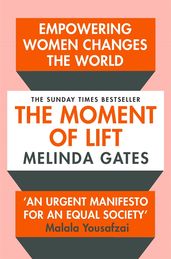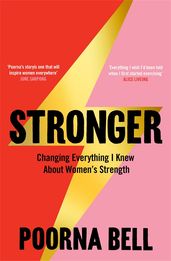22 shocking facts about gender inequality
Discover twenty-two unbelievable gender inequality statistics revealed in our titles, and find out why they matter for women's global empowerment.

With women’s rights in headlines the world over, the awe-inspiring stories of women such as Malala Yousafzai and movements such as #MeToo: unquestionably, we are witnessing a mass call for change in gender inequality. Read on to uncover twenty-two startling cases of gender inequality which unbelievably are still a reality.
If you're looking to explore feminism and gender equality further, don't miss our edit of the best feminist books.
Gender inequality statistics
1. The US is one of only eight countries in the world that does not provide any form of paid maternity leave by federal law.
Maternity leave has been linked to fewer newborn and infant deaths, higher rates of breastfeeding, less postpartum depression and a more hands-on role for new fathers. And while women who have the opportunity of proper paid maternity leave are more likely to stay in the workforce and earn higher wages, the United States and seven smaller nations still offer no such compensation.
2. Harassment is a significant issue for women exercising outdoors.
According to a Runners World poll in 2017, 40% of women have been harassed while running outdoors (and it’s even higher at 58% if you’re under 30), while men don’t get catcalled on a run.
3. As a result of contraceptive use, there were 26 million fewer unsafe abortions in the world’s poorest countries.
This staggering statistic is really quite simple: greater access to contraception saves lives.
4. In low-income countries, for every hundred boys who continue their education after high school, only fifty-five girls do the same.
Access to education is life-changing. Sending girls to school leads to improved literacy, higher wages, and faster income growth. It reduces the chance of premarital sex, lowers the chance of early marriage, delays first births, and helps mothers learn about how to plan and space their births apart. Whilst the benefits are endless, girls around the world continue to face barriers to secondary and post-secondary education.
5. On average, women around the world spend more than twice as many hours as men doing unpaid work.
Unpaid work refers to work performed in the home, from childcare, cooking and cleaning, to collecting water and gathering firewood in communities without electricity and running water. In India, women spend an average of six hours a day performing unpaid work, while men spend only one. In the US, women spend an average of four hours a day; men just 2.5. There is no country where the gap is zero. Across their lifetimes, on average a woman will spend seven years more performing unpaid work than a man. Cutting women’s unpaid work from five hours a day to three boosts women’s participation in the workforce by approximately 20%. Participating in paid work is hugely significant as it gives women the power, independence and financial resources to achieve equality with their male counterparts.
6. Women across the world currently bear the majority of childcare . . .
But, when fathers take on at least 40% of the childcare responsibilities, they themselves are at lower risk of depression and drug abuse, and their children will average higher test scores, have stronger self-esteem, and fewer behavioural problems.
7. Gender discrimination is encoded into law in countries across the globe. These are just a few examples:
- 113 countries do not have laws to ensure equal pay for equal work among men and women
- 104 countries make certain jobs off-limits for women.
- 39 countries have laws that mean a daughter cannot inherit the same proportion of assets as a son.
- 36 countries limit what wives can inherit from their husbands;
- 29 countries restrict the hours women can work;
- 18 countries allow men to prohibit their wives from working;
- 17 countries limit when and how women can travel outside the home.
It is these antiquated laws that are holding women back from empowerment.
Figures correct as of 2019.
8. Divorce has a greater negative effect on women financially than it does on men.
A 2021 survey by the Legal & General pension group found that women’s household income in the UK fell by 33% following a divorce – nearly double the impact on men post-divorce.
9. Survey after survey finds parents are more likely to teach their sons core breadwinning skills like how to build credit and invest their money.
Girls, meanwhile, are more likely to be taught how to track their spending and budget. A GiftCards.com survey in the US found that girls even get less money from their parents, with boys in high school and elementary school receiving roughly twenty dollars more on Christmas, three dollars more for completing chores, and one dollar more for allowance.
10. Media created by and for women fails to provide financial advice.
A couple of years ago, the research firm Age Wave analysed the money coverage in the most popular women’s magazines. Out of nearly 1,600 editorial pages it analysed, only five pages covered financial advice.
11. Men generally report having more financial confidence, especially when it comes to investing decisions.
A recent study from UBS Global Wealth Management found that 58% of women leave those crucial choices up to their male partners. And that doesn’t seem to be changing with Gen Y or Z. Younger women between ages twenty and thirty-four were actually the most likely to defer to their significant others, at 60%.
12. Men save more money than women.
A study by BMO Harris Bank found that, on average, men have nearly twice as much stashed in an emergency fund as women do. Over the course of their lifetimes, men save more than three times as much money, on average, than women, online tax-filing firm TurboTax found. A 2018 Federal Reserve analysis found single women have more debt, higher credit card usage, and more past-payment delinquencies on their credit reports than men.
13. If you’re a woman, you are probably being underpaid.
Women make up nearly half the workforce but continue to earn significantly less than men who do the same jobs. That nearly 20% wage gap has barely budged in years. The Institute for Women’s Policy Research found that women earn less than men in nearly every, single occupation where there’s enough data to calculate a gender ratio. Even the fact that women are better educated than at any other time in history, and getting undergrad and advanced degrees in greater numbers than men are, hasn’t made a difference. More than three-quarters of UK companies pay their male staff more than their female staff – and in nine of seventeen sectors, men earn at least 10% more than women, on average. That’s according to the 2020 data collected in the mandatory reporting exercise for companies with at least 250 employees.
14. Girls do less sport than boys.
In 2019, Sport England ran a survey looking at 130,000 children and found that, from age five to seven, girls were far less likely to take part in team sports, even though they said they loved being active.
15. Women complete more work on average, but they are assigned 55% of all work.
Workplace software company Hive analysed anonymized data for more than three thousand women and men and found that not only do women complete more work on average, but they are assigned 55% of all work, compared with 45% assigned to men.
16. Women are less likely to seek promotion than men.
Researchers have found that men are more likely to promote men – and men who are the same ethnicity – which helps perpetuate the lack of diversity at the top. But they have also found that women are less likely to ask for a raise or promotion. One internal survey of female employees at Hewlett-Packard found that women applied for a promotion only when they met 100% of the qualifications. Men applied when they met just 50%.
17. Women are less likely to be business leaders.
In the 350 biggest British PLCs, fewer than two in ten chief financial officers are women, only four per cent of investment managers are women, and just five per cent of firms are led by a female CEO. In the FTSE 100, there are more CEOs named Peter than there are women in the top job.
While entry-level positions are divided almost equally between genders, the percentage of women falls by nearly half at the senior VP level, according to Lean In and McKinsey’s 2020 Women in the Workplace report, which examined data from 329 organizations. Women represent nearly half the workforce but hold just 38 per cent of managerial positions, and the number drops at every subsequent level of seniority.
18. Women are frequently misrepresented in advertising and television.
A 2020 report from Enders Analysis noted the misrepresentation of women on telly, pointing out we are frequently and erroneously portrayed as stereotypes. For example, forty-one per cent of advertising showed women in a housewife role and twenty-eight per cent in an office role. But eighty-two per cent of women are the decision-makers when buying a new family car.
19. Women are more likely to heart disease misdiagnosed.
In 2019, the British Heart Foundation produced a briefing called Bias and Biology about how the gender gap in heart disease may be causing women to die unnecessarily: a woman is fifty per cent more likely than a man to receive the wrong initial diagnosis for a heart attack.
20. Over a quarter of women seeking medical help for menopause symptoms had to visit their GP three times or more before receiving treatment or support.
In a 2020 survey of more than one and a half thousand women by Mumsnet and Gransnet, thirty-six per cent of those who sought help from their GP for perimenopause symptoms, and twenty-six per cent of those who sought help for menopause symptoms, say they visited their GP three times or more before being prescribed appropriate medication or help.
21. The vast majority of women experiencing menopause-related migraines don't receive adequate treatment, even from menopause clinics.
In a recent review of the women attending a menopause clinic in London, over forty per cent of them were currently experiencing migraine. The majority of these women weren’t getting adequate treatment, with only twenty per cent on migraine-specific medication. ‘Most were being treated with paracetamol, which is the least effective available medication for migraine.’
22. Seventy-six per cent of workplaces on don't offer any form of support for menopause symptoms.
A 2019 survey of 1,132 menopausal women by Newson Health Clinic revealed that seventy-six per cent of their workplaces weren’t offering any sort of menopause support, in spite of over ninety per cent of respondents feeling that their symptoms were having a negative impact on work.
23. Financial advice is rife with gender discrimination
Anne Boden, CEO of the British bank Starling, commissioned a linguistic study a few years ago of three hundred money-related articles. She found that 90 per cent of money articles aimed at women suggested spending less, while the majority of those aimed at men focused on investing and building wealth. 'Women are told to cut back on coffee to save up for a new pair of shoes, Boden told the New York Times. 'With men, money is all about power suits and investing and long-term goals.'
For a deeper exploration of the astounding inequalities that still exist between genders and crucially, active approaches to positive change, don't miss our essential reading list below:
Think Like a Breadwinner
by Jennifer Barrett
In Think Like a Breadwinner, financial expert Jennifer Barrett reframes what it really means to be a breadwinner by dismantling the narrative that women don't – and shouldn't – take full financial responsibility to create the lives they want.
Featuring a wide variety of case studies from women at all stages of their careers and financial lives, Barrett shares the secrets of women who already think like breadwinners. Barrett reveals not only the importance of women building their own wealth, but also the freedom and power that comes with it.
Stronger
by Poorna Bell
Poorna Bell’s journey to get strong began when – following the death of her husband, Rob – she realized that she had been relying on the men in her life to take out the bins, carry the luggage and move furniture. Poorna is now a competitive amateur power-lifter and the strongest she has ever been. This inspiring non-fiction book is part memoir and part manifesto, starting a conversation about women’s mental and physical strength and fitness which has nothing to do with weight loss.
The Moment of Lift

In The Moment of Lift, Melinda Gates shares what she has learnt and discovered in her ongoing work towards achieving women’s global empowerment, as well as disclosing personal insights from her own journey towards equality. This moving book demonstrates the power of lifting women up, rather than holding them down.
Cracking the Menopause
by Mariella Frostrup
It's time to start talking about the menopause. Straight-talking broadcaster Mariella Frostrup joins forces with health journalist Alice Smellie to deliver all the information you need. Full of characteristic wry humour, Mariella details her own journey through the menopause with the help of the latest science, advice from experts, and a few tongue-in-cheek illustrations.
Featuring case studies from women in every walk of life and all stages of their menopause journey, Cracking the Menopause provides an informative source of wisdom and enlightenment that separates the myths from the reality and offers expertise, hope and advice.
Gain financial wisdom with these brilliant finance books.





